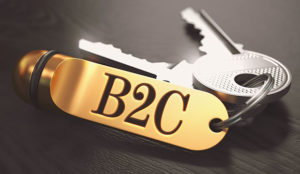
I am a nerd with a goofy hobby — I build plastic model airplanes. However, that hobby affords me a view of customer relationship issues in an interesting and intimate way. Most of the time, the vendors in this space get things right, realizing theirs is a niche industry and their customers really are in charge, especially since all spending in this sector is discretionary.
When someone screws up, it’s spectacular — and educational. Right now, there’s an example of that playing out in the form of Czech manufacturer Eduard’s new model of the Messerschmitt Bf 109G.
The Bf 109, a World War II fighter, has been kitted hundreds of time. Enthusiasts pore over each kit and identify errors, even minuscule ones, and today can share them on social media. In advance of Eduard’s release of its Bf 109, the company talked up its coming product as the most accurate Bf 109 ever — and, to be fair, the company has a track record of excellent products.
The problem with its Bf 109 seems to be one of simple math. While it’s billed as a 1:48 scale kit, a standard scale for airplane models, the Eduard kit measures out at 1:45 or so. An error of roughly 4 percent may seem like a small difference — but it’s enough to make the model noticeably larger than other kits of the same subject.
There are three immediate, clear lessons to be learned from Eduard’s response to hobbyists’ reactions to the model.
1. Avoid Premature Hubris
It’s good to be proud of your products, and it’s important to your business to turn that pride into good marketing. However, it’s dangerous to be proud of products you haven’t actually produced yet.
The marketing campaign for this model started in January 2013, and CEO Vladimir Sulc was effusive about how great the model would be.
“There are no true (Bf 109)Gs or Fs on the market, really, and those that claim to be are more than showing their age or are slashed and dismembered beyond reason,” he wrote in 2013. Over the course of a series of online chats, he talked up the kit and emphasized its accuracy.
The lesson: Don’t set expectations you can’t meet. It’s one thing to promote a product you’ve seen — it’s another to tout something you haven’t seen yet. That puts your employees on the spot: To back you up, they must be perfect. If they aren’t perfect, your words will return to haunt you.
2. Admit Your Mistakes
Once the model came out, modelers started to howl about its size. Eduard stuck to its guns and insisted it was accurate, posting on numerous hobby boards. What’s wrong here is that this is a math problem, not a subjective judgment issue. If you know the size of the real item, simple division gives you the dimensions of the miniature version.
However, Eduard’s tactic was to deny and denigrate critics — “many of these faults are actually [not] faults, but just subjective points of [view] … lead by the hyperventilators,” the company wrote in a chat.
The lesson: When you make a mistake — one that your customers can identify easily — own up to it. Explain how you plan to fix it — or if you’re not going to fix it, say that, too, and promise to do better next time. Sincerity goes a long way. For heaven’s sake, don’t deny the problem or take shots at the people who spot it.
3. Don’t Make Feeble Excuses
After a month of getting pounded in social media, Eduard doubled down last weekend in a Facebook post that claimed that the dimensional problem was due to the size of the Bf 109G being “chaotically recorded” as Nazi Germany collapsed.
The problem with this is that the airplane in question first flew in 1936, meaning there was a nine-year span to record the dimensions. Also, we’re talking about the Germans here: Nothing was “chaotically recorded.” After a fresh round of flagellation, the post was edited.
The lesson: Don’t fool yourself into thinking you can control your customers’ reality. Making up an excuse based on history and then foisting it on people who are history buffs is a bad idea. Essentially, you’re counting on your customers being dumb.
Here’s a secret: They’re not dumb, and they can tell when you’re treating them like they’re dumb. In the era of social media, this is extremely dangerous.
The molds for a kit like this are very expensive, and Eduard’s mathematical mistake puts it in a bad position financially. That’s why the company is so desperate to make discussion of its errors go away. Yet if it hopes to overcome this setback, it’s going to need to bring its customers with it to its future projects. That means loyalty.
Naysaying customers and making things up to justify mistakes now is a great way to wreck a brand’s future.























































